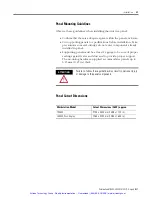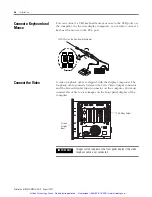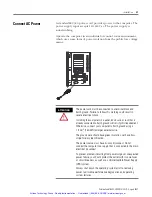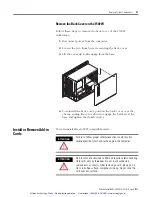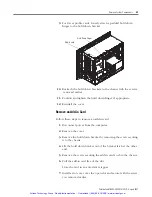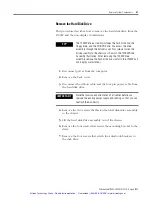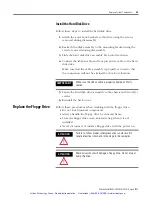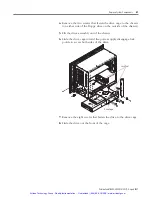
Publication 6180W-UM001H-EN-P - August 2007
Operation
33
Start the System
Apply power to the system. The computer performs a Power On Self
Test (POST). The processor board, memory, keyboard, and certain
peripheral devices are tested.
The system displays the progress of the POST and initialization of
accessory devices. The computer displays the startup dialogs for the
operating system that is installed.
If your system does not start up, or you notice other problems, refer to
System Troubleshooting.
Reset the System
To reset the computer, press Ctrl+Alt+Delete and follow the operating
system instructions.
After resetting, the computer begins the Power On Self Test (POST).
During a reset, the computer:
•
clears RAM.
•
starts the POST.
•
initializes peripheral devices, such as drives and printers.
•
loads the operating system.
Install Drivers
The operating system usually selects the best device driver settings.
However, to be sure of fully optimized performance by manually
installing the device drivers included with your system. Refer to the
Readme files on the supplied accessory CD for details on the latest
device drivers and installation procedures.
Universal Serial Bus (USB)
Ports
The Universal Serial Bus (USB) is an external bus standard that
supports data transfer rates up to 12 Mbps (12 million bits per
second). You can connect multiple peripheral devices to the USB
ports, such as a mouse, modem, and keyboard. USB also supports
plug-and-play installation and hot plugging.
For information on installing or using USB, refer to the documentation
for your USB peripheral device.
TIP
Many USB devices only work with Windows XP or Windows
2000 operating systems because they have native USB drivers.
Make sure the selected USB peripheral has software drivers
available for your target operating system.
Artisan Technology Group - Quality Instrumentation ... Guaranteed | (888) 88-SOURCE | www.artisantg.com



